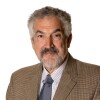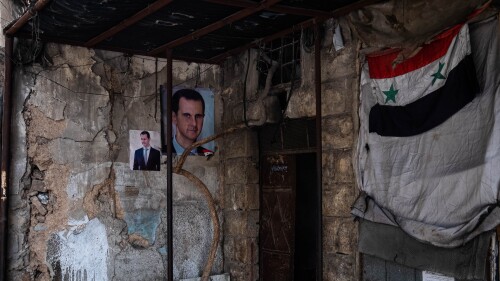Islamic schools constitute perhaps the least known area of Muslim institutional life in the United States, acting largely out of public view but with many signs suggesting their radicalization. When a reporter has the rare chance to interview faculty and students, especially with a photographer in tow, it’s an important opportunity.
Marguerite Michaels of Time Magazine got “an unusual degree of access” to the inside of the Universal School in Bridgeview, Illinois, sixteen miles southwest of downtown Chicago, with 638 students in pre-K through 12th grades. She wrote up her impressions at “The Model School, Islamic Style” and Robert A. Davis took some striking pictures.
Unfortunately, Michaels proved clueless about the real nature of the Universal School. She portrays it as a moderate institution, but the information she herself provides points to its being a school imparting an extreme version of Islam.
Several examples concern sexuality:
- “Casual conversation between girls and boys is discouraged at all times,” she reports. “They can’t socialize,” so any communication between the sexes is limited to writing.
- “Older girls must wear the hijab (light blue for middle schoolers, gray or white for high schoolers) and a calf-length navy top that resembles a raincoat.” The astonishing photograph of eight covered girls playing basketball brings to mind the female Islamist revolutionaries who rose against the shah of Iran in the late 1970s. Students realize how off-putting most Americans find this apparel; a freshman, Gulrana Syed, points out how “It’s kind of impossible to blend in wearing a head scarf.”
- When a high school senior, Ali Fadhli, tells about his “problems” dealing with America outside the school environment, he mostly means sexual temptation. This 18-year-old male will likely have difficulties adjusting to the mainstream of American life; he could end up isolated and perhaps violently rejecting the society around him.
Other attitudes concern the place of Muslims in the United States:
- Until 9/11, says Safaa Zarzour, vice chairman of the school’s board and its former principal, Muslims, like other immigrants, experienced a “little discrimination.” Since 9/11, however, “people don’t think there is any such thing as a good Muslim.” One school family actually fled the United States after 9/11 for the United Arab Emirates, saying it did not feel “welcome here as Muslims.” This siege mentality furthers the Islamist agenda of grievance and demanding special privileges.
- So too does a comment of Universal’s principal, Farhat Siddiqui. “We’re telling our kids they’re American. But the doors of opportunity have been shut since 9/11. What’s the password to open them?” This is nonsense, for all evidence indicates that Muslims are flourishing socio-economically in the United States, no less after 9/11 than before it.
- The high school senior quoted above also believes that “America” sees Muslims as the “new enemy.” A student named Ryan Ahmad observes that “Americans seem to have more fun. Muslims try to be American, but we don’t know how. The cultures are so different.” Seeing Americans and Muslims, or more accurately, non-Muslims and Muslims, as separate populations is a key component of the Islamist project.
A preoccupation with foreign policy rounds out the picture:
- “They are obsessed with foreign politics,” says Steve Landek, the mayor of Bridgeview. “I come to talk to them about better sidewalks. They want to know how to run for Congress so they can change America’s Israeli policy.”
- Assigned in English class to write about his American Dream, a 15-year-old wrote that the territories under Israeli control should be returned to the Palestinians and “the Jews should be left to suffer.”
I finished Marguerite Michaels’s article doubly dismayed. First, that a veteran Time journalist cannot see an American madrassah before her very eyes, replete with the alienation, resentment, supremacism, and isolation that feed the Islamist temperament. Secondly, that this “model school” quietly and openly churns out graduates hoping they will create an Islamic States of America.
--------------------------------------------------------------------------------
Mar. 17, 2006 update: It turns out that a star of the Islamist firmament, Ingrid Mattson, was associated with the Universal School of Bridgeview, Ill. (according to her biography for a Muslim Student Association event starting today).
During her graduate studies in Chicago, Dr. Mattson was involved with the local Muslim community, serving on the board of directors of Universal School in Bridgeview.
--------------------------------------------------------------------------------








